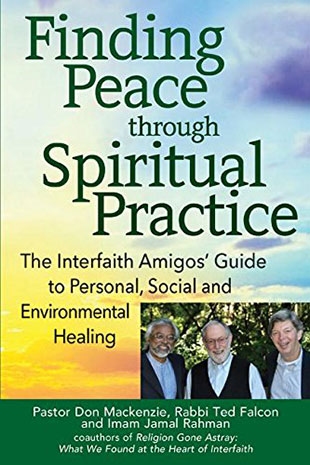"In our first book, Getting to the Heart of Interfaith, we identified and explored five stages in a deepening interfaith dialogue process. We summarize them briefly here so readers can best appreciate the addition of spiritual practice as the sixth stage in this pursuit.
The Five Stages of Effective Interfaith Dialogue
1. Creating a context in which we can meet each other as human beings. For many of us, our religious identity is an important aspect of our lives. But we are more than that religious identity. We share many of the challenges and opportunities, the wins and the losses, that all human beings encounter in their lives. Listening to another’s story can most effectively build bridges of understanding as the focus turns toward religious identity.
2. Exploring our understanding of a core teaching of our tradition. Each tradition contains teachings, beliefs, texts, rituals, and practices that define that tradition in its uniqueness as well as its universality. Even those without a formal religious identity can point to a central teaching that guides their lives. Such a teaching applies more broadly than a specific belief system, and we encourage consideration of a central teaching against which we can measure other aspects of our tradition and our lives.
3. Honoring what supports that core teaching and what does not. Meeting each other as human beings and sharing a core teaching allow us to openly examine those aspects of our own traditions that are in keeping with that core teaching, and those aspects that seem to conflict with that teaching.
4. Entering into more difficult conversations. The history of interfaith relationships has not been without serious conflicts and challenges. Supported by the first three stages of a developing dialogue, it becomes possible to address historical as well as current sources of pain. Without this foundation, for example, many Abrahamic interfaith groups falter when the conversation turns to the conflict between Israelis and Palestinians. Yet such conversation is absolutely necessary if we ever hope to move beyond violence toward healing.
5. Walking another’s path. We believe that interfaith dialogue is not about conversion but about completion — becoming a more complete human being. We also believe that every authentic spiritual path is an avenue to a shared Universal. If this is so, might it be possible to celebrate that Universal through the rituals of another’s tradition? To us, such opportunities radically support a deeper understanding of rituals in our own tradition.
These first five stages of interfaith dialogue expand a conversation of personal experience, sharing traditional wisdom, and increasing understanding and the ability to talk about difficult issues. They encourage us to meet another’s path. But what truly unites us is far more than an intellectual or an emotional sharing. So now it is time for us to acknowledge the necessary sixth stage of an evolving interfaith dialogue.
6. Engaging in and sharing spiritual practices. In awakening to more spiritual dimensions of consciousness, we can enter an environment of a far more profound sharing. While celebrating the rituals of other faith traditions is a beautiful way to deepen interfaith understanding, there is an even greater depth when we share personal spiritual practices. These are more private, more subject to each person’s preferences and unique spiritual history. They are also the avenue through which most of us experience the true transformation that the rituals of our faith express and celebrate.
